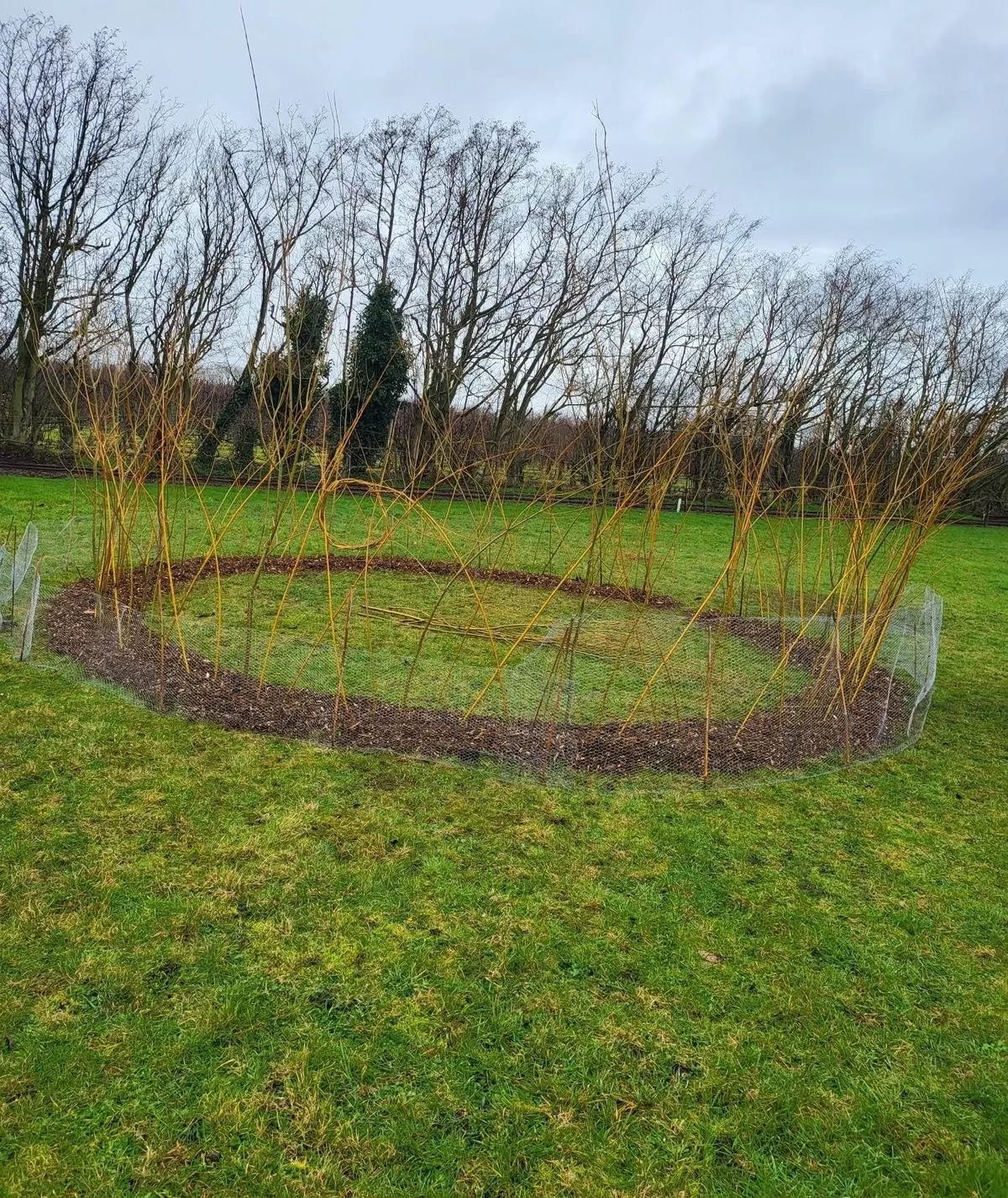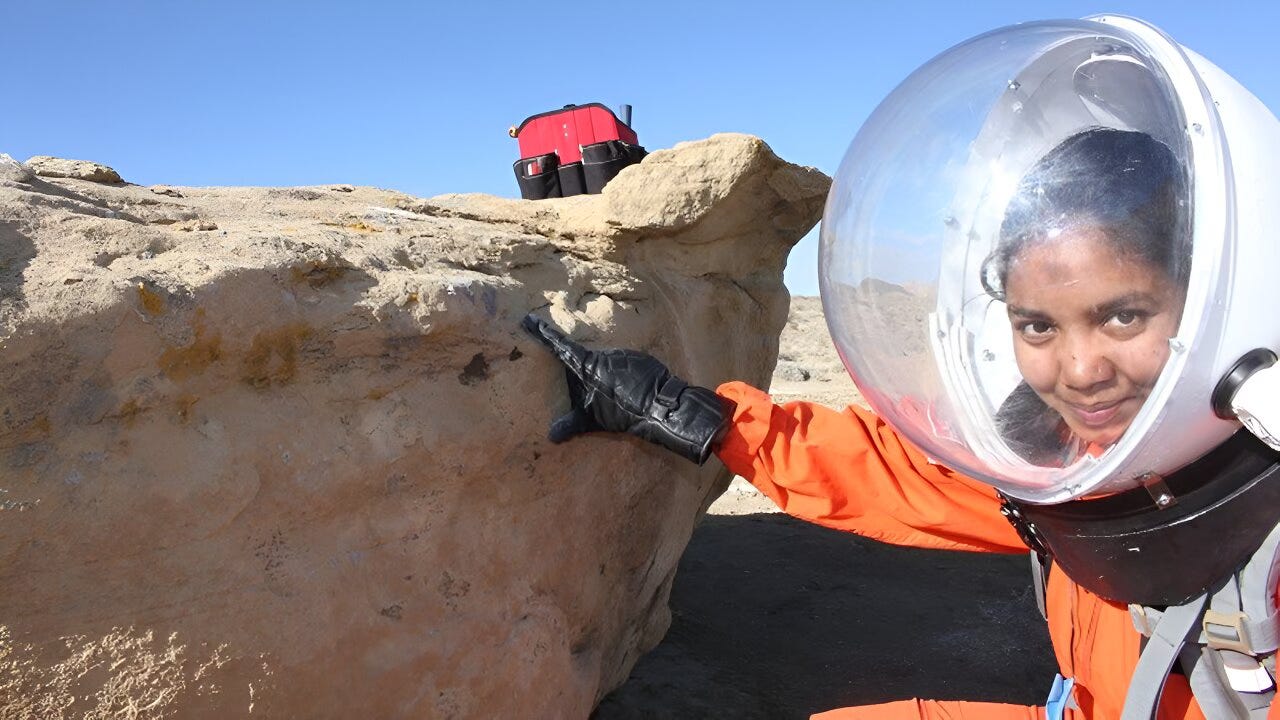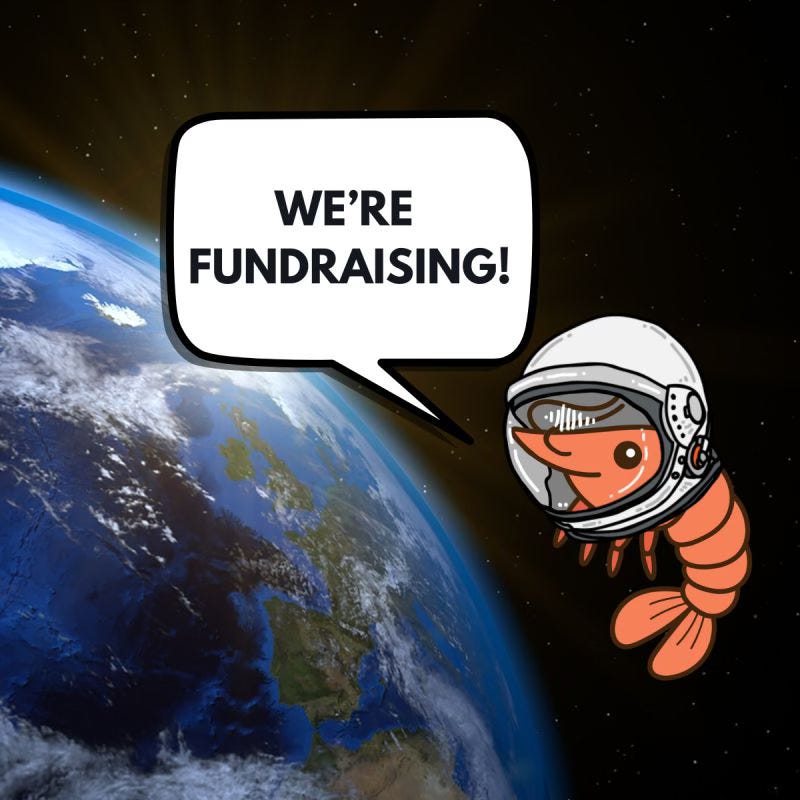Gardeners of the Galaxy Mission Report: 15 October 2024
Your weekly round-up of astrobotany news and adventure. This week we've got an update on a space apple tree, news on Ohalo III, the retrieval of Chinese space seeds and AI chats with extinct animals!
Hello, Gardeners of the Galaxy! Welcome to this week's Mission Report.

The latest Sunday Supplement mentioned ongoing USDA/NASA research developing new apple varieties for space. It’s been a while since I mentioned the “space apples” grown from seeds that flew to the International Space Station (ISS) with Tim Peake (that was episode 40).
When I was down at the Eden Project last month, I looked for their space apple, but it doesn’t seem to have been planted out yet. So it’s nice to have an update about one of the other saplings.
It was given to the Brogdale Collection in Kent, which is home to the National Fruit Collection. It’s now going to be the centrepiece of a ‘one-of-a-kind’ space themed garden and play park, with eight other apple trees with connections to space and Newton. A living willow planetarium has already been planted.
“This is a brilliant project that will provide us with a fantastic new asset for engaging with young people and visitors of all ages, making Brogdale an even more exciting and attractive venue to visit, said Alan Roe, chair of Brogdale CIC trustees. “At its heart is a tree grown from a seed from the actual apple tree that inspired Sir Isaac Newton’s theory of gravity, and which was taken to the International Space Station by astronaut Sir Tim Peake.
Read more: 'One of a kind' space-themed garden and play park launching in Kent town alongside historic tree
In other news...
On the ISS, the crew has been replacing components that remove carbon dioxide and ethylene from inside the Advanced Plant Habitat to support an upcoming space botany study. And Plant Water Management 5 is underway.
I managed to catch the first talk of the Space Ecology Workshop on Friday, which (in a change to the schedule) turned out to be GotG Friend Gioia Massa from NASA. Among other things, Dr Massa talked a little about Ohalo III, the next-generation crop production system currently under development.
Ohalo III is being built for the ISS, and the team expects it to launch in summer/fall 2026. The plan is also to use it a future Mars transit mission. It’s a production system rather than a test system; although it is more complex than Veggie, it’s less complex than the Advanced Plant Habitat (APH). Although it’s similar in size to the APH, as less space is given over to control systems, it has a larger growing area. It recycles water, but unlike the APH it doesn’t need supplementary CO2; it’s going to take that from the cabin atmosphere.
Dr Massa confirmed that research conducted on the ISS shows that gardening has a positive effect on astronaut’s wellbeing. She also talked about the space plant microbiome. A number of plant pathogens are present on the ISS, because we simply can’t sterilise everything. During the challenging VEG-05 experiment, the adventitious roots that grew on the tomatoes were found to be repositories for microbes.
The upcoming Plant Habitat-07 experiment (launching on CRS-31) will explore growing Outredgeous Red Romain lettuce in the APH under different watering conditions, intentionally looking at water stress. It will involve three 28-day growth experiments, under drought, flood and “water & wilt” conditions. The team will be extracting roots for analysis, looking at both plant responses and microbiome responses.
And Dr Massa also mentioned an upcoming experiment from plant pathologist Dr Andrew Schuerger at the University of Florida. “Microgravity Can Down-Regulate Host Resistance and thus May Up-Regulate Plant Disease Development in Space” will include a novel flight experiment to study the development of powdery mildew on Arabidopsis thaliana.
This talk and the rest of the Space Ecology Workshop was recorded, and should be released on the SEW YouTube channel at some point in the future.
Western News has a story on the team exploring turning asteroids into food using an open-source bioreactor, which I talked about last week.
Read more: Eating asteroids? Western research team creates possible food for space travel
China’s first reusable satellite has returned to Earth and been recovered from its landing site in Inner Mongolia. The Shijian 19 payload included plant seeds, microorganism samples and technology demonstration devices, as well as science payloads from five nations, including Thailand and Pakistan. According to Interesting Engineering, “Seeds from Hainan and Anhui provinces were sent into space and exposed to conditions designed to induce mutations.”
Read more: Nation's first reusable satellite returns

Lichens are known from every continent, and almost certainly every land mass on planet Earth; some species have even survived exposure to the exterior of the International Space Station. This hardy nature has long interested researchers studying what life could survive on Mars, and the astrobiologists studying life on Earth as an analog of our planetary neighbour. In the deserts surrounding two Mars analog stations in North America, lichens comprise such an important part of the local ecosystems that they inspired a biodiversity assessment with a unique twist: this collections-based inventory took place during a simulated mission to Mars.
Read more: Mars analog stations investigate lichen biodiversity during simulated missions
SpaceX achieved a significant milestone on Sunday by catching the massive booster stage from its Starship rocket in a pair of robotic arms as it fell back to the company’s launchpad in southern Texas. The historic feat, which drew praise from astronauts and space experts, topped a successful fifth test flight for the uncrewed Starship, which blasted off from the Boca Chica starbase at 7.25am local time (1325 BST) on Sunday.
Read more: SpaceX launches Starship rocket and catches booster in giant metal arms
Scientists first realised Jupiter’s icy Europa might support life in the 1970s when, peering through a telescope in Arizona, they saw water ice. The Voyager 1 and 2 spacecrafts captured the first close-up images, and then in 1995 Nasa’s Galileo spacecraft flew past Europa taking some deeply puzzling pictures. They showed a surface riddled with dark, reddish-brown cracks, fractures that may contain salts and sulfur compounds that could support life. The Hubble space telescope has since taken pictures of what might be plumes of water ejected 100 miles (160 kilometres) above the moon’s surface. Now NASA’s Europa Clipper is on its way to map almost the entire moon, collect dust particles and fly through the water plumes.
Read more: Spacecraft blasts off to hunt alien life on a distant moon
Help Send Shrimp Into Space!
In 2025, SCAMPI - a student-led project at The Spring Institute for Forests on the Moon - will send Hawaiian red shrimp, macroalgae, and microbes to the International Space Station (ISS) in a self-sustaining ecosphere to better understand how aquatic ecosystems behave in microgravity.
Creating sustainable ecosystems in space that can support life isn’t just science fiction - it’s essential for the future of long-term human space missions. The knowledge gained from this will shape how humans live and thrive beyond Earth.
SCAMPI will be one of the first ecosystem-level experiments to go to the ISS, allowing us to investigate how biotic and abiotic factors of an environment behave differently in microgravity.
While most of the costs are covered, manufacturing and testing to meet the ISS standards come at an additional steep cost. The team is now crowfunding the production of the SCAMPI module hardware and the crucial testing phase.
Support them now: Project SCAMPI - Help Us Send Shrimp to Space!
Seeds don’t need a rocket to fly! Many plants have what are known as winged seeds, which have features shaped to take advantage of wind or the air - such shapes extend dispersal distances of seeds, allowing less competition between them. The first seeds evolved approximately 372 to 359 million years ago, during the Famennian stage, but winged seeds didn’t evolve until later. Only two plant groups are known to have developed wings during the Famennian (during the Late Devonian). Now researchers from China have found one of the earliest examples of a winged seed in a mine in Anhui Province. They were able to date the seeds to 365 million years ago, making them the second-oldest winged seeds ever found. The team named the plant Alasemenia.
Read more: One of the earliest examples of a winged seed found in a mine in China
Visitors to The University of Cambridge's Museum of Zoology will be able to have two-way chats with animals on display using generative artificial intelligence (AI). Experts have chosen 13 specimens for the conversations, including the extinct flightless bird the dodo, narwhal and blue fin whale skeletons, a red panda and a preserved cockroach. They’re all fauna, but maybe one day we’ll be having conversations with extinct flora?
Read more: Museum visitors to have AI chats with dodo
Watch It!
I'll be back in your inboxes next week. Thanks for reading and being part of the Gardeners of the Galaxy community — your support allows me to keep doing this work.
Ex solo ad astra,
Emma (Space Gardener)



